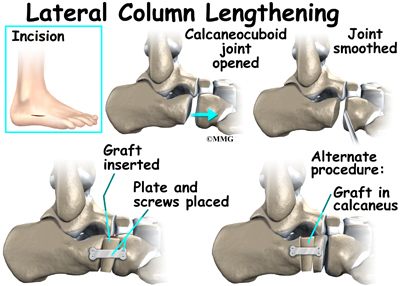The term "All American" actually comes from the fact that the surgery involves multiple procedures rolled into one. According to Mercy Hospital, each procedure was used independently to correct adolescent flatfoot, but combining them for adult correction was considered innovative when proposed by Dr. Gregory Pomeroy and Dr. Arthur Manoli. Because of its founders, the surgery is also sometimes known as the Pomeroy-Manoli Procedure.
Obviously, every surgery is going to be a little bit different for every patient. The right doctor is obviously going to tailor the procedure to your needs. Now, I should preface this by explaining that I am NOT a medical professional, and my training as a museum curator should not give you confidence in my abilities to diagnose. This is simply my attempt to explain the procedure I was given in terms that make sense to me, and hopefully to you as well. Much of this information is based off of either discussions with my surgeon, or research I did. I found the website Foot Education to be especially helpful.
So your navicular bone in your foot is a normal bone that most everybody has. An accessory navicular, then, is an extra bone. It is congenital, which means I've had it since I was born, and it occurs in about 2.5% of the population, and for most people doesn't cause any problems. They removed the bone, and repaired the posterior tibial tendon. Going in, we knew it was damaged, but according to the surgeon they found it had actually torn once they got in there.
Medial Displacement Calcaneal Osteotomy
The best way I can explain this is that it is tilting the ankle back in the right direction. An incision is made into the heel, then the bone is cut into two pieces. Then, the back part of the bone is shifted so the ankle will rest straight, and it is held in place using screws.
Lateral Column Lengthening
 |
| Houston Methodist Orthopedics & Sports Medicine |
If the above is tilting the ankle in the right direction, this is all about tilting the foot. For me this involved a couple of screws and a cadaver bone wedge graft. They insert the wedge, usually between 6-12 mm either into the joint of the calcaneus and cuboid bones, or by making a cut into the former right before the joint and inserting the wedge there.
There may have been more to it, but as far as I am aware this was the procedure. I go back in on the 17th for my surgical post-op, and he'll walk me through it in a little more detail!


Just a reminder that while I really appreciate comments and hearing people's stories, I do not allow for advertising in my comment sections. Thank you!
ReplyDelete